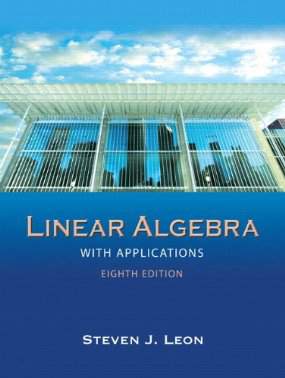Connecting...

This is a quick preview of the lesson. For full access, please Log In or Sign up.
For more information, please see full course syllabus of Linear Algebra
For more information, please see full course syllabus of Linear Algebra
Linear Algebra Orthogonal Complements, Part I
Lecture Description
Orthogonal complements are essentially vectors that are perpendicular to a vector or a subspace. Calling a vector an orthogonal complement of another is just a way of saying that the vectors are orthogonal. This video will serve as a formal theorem reference for orthogonality, and will act as a segway into the next video where we’ll talk about applications of orthogonal complements.
Bookmark & Share
Embed
Share this knowledge with your friends!
Copy & Paste this embed code into your website’s HTML
Please ensure that your website editor is in text mode when you paste the code.(In Wordpress, the mode button is on the top right corner.)
×
- - Allow users to view the embedded video in full-size.
Next Lecture
Previous Lecture










































 Answer Engine
Answer Engine




2 answers
Last reply by: scott ZHANG
Sat Mar 15, 2014 12:47 AM
Post by scott ZHANG on March 11, 2014
u said that If you have two vector basis that are orthgan to each other in R(n) they must span the entire dimension, but lets say i have two lines are orthgan to each other in the R(3), but they dont span the entire R(3) universe?
0 answers
Post by Manfred Berger on June 21, 2013
Are you using the term function to mean invertable function in general?